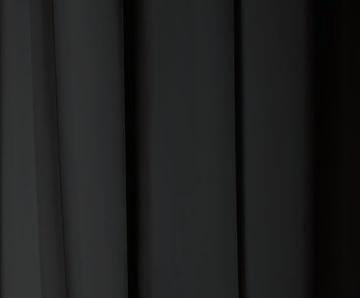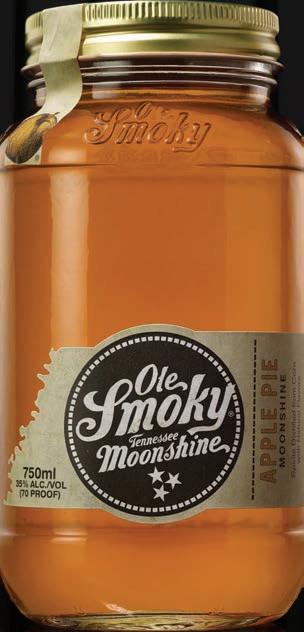
15 minute read
FEATURES
THE “F’REAL” Deal

Advertisement
A FAST AND EASY WAY TO MAKE BLENDED DRINKS.
Blended drinks are a great upsell and increase check size, but they can be messy to make, time consuming, and inconsistent.
“Currently, most bars are either using a traditional blender and adding ice, mixer, and alcohol to make a drink, or for boozy shakes, they’re adding ice cream or a mixer,” say Michelle Davis, VP of Foodservice Sales, and Melissa Torok, director of Marketing at f’real. “It’s a big hassle for bars to pull all the ingredients
BY ASHLEY BRAY
together, blend it up, and then have to clean out the blender for the next drink. Bartenders generally hate making blended drinks because it takes so much more time than other drinks.”
The f’real Foodservice Blender offers a timesaving and mess-free alternative method of making blended drinks.
“Our blender is very easy to operate. You simply place it on the counter, add water to the reservoir, and you’re ready to blend,” say Davis & Torok, who explain that bartenders then choose a pre-filled cup in the desired flavoring. “The blender does the rest with just a push of a button.”
Staff chooses between two options: Blend & Serve and Custom-Made. “Blend & Serve has all the flavors already in the cup, ready to go. You just remove the lid, place it in the blender, and press start,” say Davis & Torok. “The cups are prefilled with frozen blended product so the blender is able to quickly blend in less than 40 seconds to create the perfect shake or smoothie. It is consistent every time and there is no waste.”
Frozen Mojito
Blend & Serve is available in seven flavors: vanilla, chocolate, strawberry, and Oreo® flavors for milkshakes; mango and strawberry banana for smoothies; and a coffee frappe.
The Custom-Made option is base product in the cup with no flavoring. The bartender chooses either a shake or smoothie base and can then add syrups, purees, inclusions, alcohol, or almost anything else to easily create their own signature or custom flavors.
“Since the bartenders are adding alcohol, there is still the opportunity to upsell liquor,” say Davis & Torok. “The opportunity for customization is endless allowing for bartenders to make drinks just the way their patrons like them, or to create signature drinks.”
Alcohol can be added to either the Custom-Made or Blend & Serve option. The blender also allows you to customize thickness of the frozen blended drink— less thick, regular thick, and more thick. These customizable settings allow for any frozen beverage blending with alcohol, espresso, lemon juice, wine, and more.
“It’s truly amazing how many different and amazing creations you can make with our bases and how fast and easy it is to do it—frozen lemonades, acai bowls, root beer floats, protein shakes, frappes,” say Davis & Torok. “And of course, any alcoholic concoction you can think of: frose, beer shakes, boozy shakes, frozen cocktails, and more. It’s an ideal form of speed scratch.”
In addition to cutting down on prep time, the f’real Foodservice Blender boasts hands-free operation. “All the bartender needs to do is just add alcohol to the frozen cup and press start. The blending is hands-free, so the bartender can walk away, take another order, or make another drink and then come back and the drink is done,” say Davis & Torok. “They can either serve the drink in the plastic cup, or they can pour it into a glass. Since everything is pre-portioned, there is no waste and cleanup is minimal.”
For cleanup, Davis & Torok say only the spindle needs to be cleaned every four hours. “If using allergens like nuts or wheat, it should be cleaned after each use,” they say. “The spindle can be cleaned in a dishwasher or three-basin sink. Each blender comes with two spindles, so while one is being cleaned the other can be in use. Beyond that, it’s just wiping down the machine. The splatter guard and water tank can also be put into the dishwasher, and it’s recommended the water tank be sanitized monthly.”
It’s also easier to upsell blended drinks with the f’real Foodservice Blender. “Blended drinks generally command a premium, which means bars increase their ticket sales,” say Davis & Torok. “Bartenders like to use the f’real Foodservice Blender, so are more likely to upsell to frozen drinks and push blended drinks to patrons. Blended drinks are also considered a special item, or a treat. It’s not something a customer would usually have and therefore is more memorable. This increases the chance for recommendations and repeat business.”
Frozen drinks can also be dressed up to promote sharing via social media, which can drum up even more interest and business.
Speaking of marketing, the f’real team is dedicated to ensuring its clients succeed, and it offers
Hurricane Cocktail Select smoothie base 1.5 oz Passion Fruit Puree 1 fl oz of lime juice 1 fl oz of orange juice 0.75 oz Light rum 0.75 oz Dark rum Blend and garnish with an orange slice and cherry.
King Cake Shot
Select shake base or vanilla shake 0.75 oz Fireball 0.75 oz Rumchata Blend. Add purple, green, and yellow food coloring or glitter to jazz it up!
Frozen Mojito
Select smoothie base 1/4 oz Monin® Lime Syrup 1/8 oz Monin® Mint Syrup Mint leaves 1 fl oz lime juice 1.5 oz Rum Blend and garnish with mint leaves and lime.
Creamy Old Fashioned Select shake base or vanilla shake 1.5 oz Bourbon Drizzle Angostura orange bitters Blend and garnish with orange twist.
Frozen Mudslide
Select shake base or vanilla shake 0.75 fl oz Vodka 0.75 fl oz Kahlúa® 0.75 fl oz Bailey’s® Blend. Add chocolate drizzle and garnish with Rich’s On Top®, Kahlua drizzle, and coffee beans. All recipes courtesy of f’real


The f’real Foodservice Blender offers a timesaving and mess-free method of making blended drinks.
marketing collateral to help them do so.
“We are doing everything we can to support the restaurants’ marketing efforts and minimize any pain points,” say Davis & Torok. “This includes providing standard POS pieces for free or providing artwork for custom POS. Customers won’t order a product if they don’t know about it, so we try to work with our accounts to help them build awareness and trial around these products. Additionally, we assist our accounts in ordering custom logo stickers for cups. We also have an extensive library of recipes on our website.”
F’real also recommends ways to dress up blended drinks with support products like Rich’s On Top® for whipped topping; Monin for syrups, purees, and sauces; and TR Toppers for toppings and inclusions.
F’real’s Foodservice Blender is used by
JELLO SHOT CUPS SQUEEZEABLE

JELLO SHOT INJECTORS UNIQUELY SHAPED









JELLO SHOT SYRINGES

a variety of bars and restaurants, including Wild Wing Cafe, Buffalo Wings & Rings, and Walk-On’s Bistreaux & Bar, where the machines are operating in multiple franchise locations.
“We wanted to offer a cravable, fun beverage and dessert item,” says Lacey Lauderdale, beverage manager at WalkOn’s Enterprises, who says the machine has provided incremental sales. “We have committed to offering only N/A shakes for the time being—both with full garnish set up and kids’ portions with whip only.”
Blended beverages aren’t only great additions to dine-in menus, but takeout menus as well, which has been the focus of many bars/restaurants in light of restrictions due to COVID-19. “It’s blended right in the cup, so all they have to do is snap on a to-go lid and send it off,” say Davis & Torok. “The drinks are transportable up to an hour as long as they’re not in heat.”
The f’real Foodservice Blender cuts down on preparation, making blended drinks a great product to offer now, when customers want to know the product they’re receiving is sanitary and safe. “They still get the credit for making it their own because they’re blending it there, but they don’t have to do all the prep work, which can introduce potential contamination,” say Davis & Torok.
Plus, blended drinks are great for incremental sales alongside takeout orders of pizza, burgers, etc. “It provides the extra-special experience that restaurants are trying to give to their customers,” say Davis & Torok, “and whether it’s in person or through delivery, any kind of blended beverage is going to help deliver that.”
THE ‘SHINE THAT KEEPS ON SHINING







THREE YEARS IN A ROW. A LEGACY IN THE MAKING OLE SMOKY ® IS THE MOST AWARDED MOONSHINE IN THE WORLD *



Will Change the Bar Industry HOW COVID-19


We recently chatted with Jon Taffer about the effects of COVID-19 on the bar/restaurant industry. Taffer is an industry expert, the host of Bar Rescue, and an entrepreneur with new ventures that include the opening of Taffer’s Tavern restaurant and the launch of Taffer’s Mixologist, a line of mixers and hard seltzers.
As the host of Bar Rescue, Taffer has seen it all, and while the effects of this pandemic are uncharted territory even for him, that hasn’t stopped him from formulating a plan of attack.
“I’ve been really focused on how do we reopen after the pandemic,” he says. “Rather than sitting home panicking about the pandemic, I think we need to be thinking about our businesses, how we move forward, and putting together a plan.”
Taffer says bar owners should consider the following: • How do we set up our business models? • What can we do in our processes and our productions? • How can we start to sterilize and realign processes in our kitchens?
It won’t be business as usual after COVID-19, and the industry must prepare for a reset. “The whole premise of flu season will be perceived differently by society now. And every fall, we’re going to get a reminder of this whole spacing element,” says Taffer. “I don’t think 400 people are going to pack into a 2000-square-foot space for quite a while.
“And so when we take a look at the sociological premise, it affects everything. It affects fast food restaurants—people are not going to line up like they used to. If we take a look at bars, people are not going to sit shoulder to shoulder with strangers so quickly,” he continues. “We’re going to have to spread barstools a little bit. We’re going to have to spread seating in restaurants and casual dining facilities significantly.”
What this all boils down to is a drastically impacted floor plan and a tank in revenue per square foot.
“I’ve been looking at floor plans and layouts, and no matter how I slice it, as an industry we lose between 40-60% of our interior capacity,” says Taffer. “At the end of the day, our business is most rated and success is most determined by revenue per square foot. That’s how we live and survive. Our revenue per square foot is going to be reduced significantly going forward and that horrifies me.”
Since fine dining and chef-driven restaurants typically have more space between tables already, the new spacing requirements will hit casual eateries the hardest.
“It seems like the greatest impact with regard to capacity is going to hit in the casual sector and the bar sector because that’s where the densest seating and the densest customer mixes tend to be,” says Taffer.
Taffer also cautions that bars and restaurants serving an older
JON TAFFER PREDICTS WHAT THE BAR INDUSTRY WILL LOOK LIKE AFTER THE DUST SETTLES.
BY ASHLEY BRAY
demographic, which are most likely to be looking for more spacing or abstaining from eating out entirely, will be hit harder.
“When you look at bars that have daytime audiences, and working people, and demographics that are over 45 years old, they’re going to be the most cautious of all. So they’re the ones that drive many of these businesses during certain key dayparts. I’m concerned they’re going to disappear,” says Taffer. “If a place does 100 lunches in an hour, they cannot do 100 deliveries—it just doesn’t work that way. So delivery is great and curbside pickup is great, and these things all make sense and maybe over time they’ll become a way of life, but I just don’t see them sustaining 80% of the operations out there.”
Space reductions could also have an effect on operations. “You can’t have as many menu items, that’s for sure. So the days of these vast menus are over. Food is going to have to get more specialized,” says Taffer. “If you had 40 brands of vodka, now you’re probably going to have eight. If you had 30 items on a menu, now you’re going to have five or six. Everything is going to have to be much, much better controlled.”
COVID-19 will not only affect consumers’ spatial awareness, it will also make them more aware of the cleanliness and sterilization surrounding food and drink preparation. What was the standard before the outbreak will no longer apply, and bar owners should be prepared for this shift.
“We’re going to have to start to develop a more sterile industry. Kitchens are going to look a lot more like operating rooms,” says Taffer. “I can’t believe that people will be standing in kitchens in street clothes after this. I can’t believe that people aren’t going to be wearing a mask when they’re looking down at a plate that they’re building. I can’t believe that people won’t wear some type of a standard hat—not a hat from home.”
Taffer had all of this in mind, before the COVID-19 pandemic, when building out the kitchen in Taffer’s Tavern, which leverages advanced sous vide food preparation methods. Taffer’s Safe Dining System™ includes the highest food sanitation standards, no raw protein, medically safe preparation techniques, and food untouched by human hands.
Bar owners are going to have to rethink even the smallest gestures. Taffer uses the example of a bartender picking up a sterilized glass from a drain board and handing it to someone. “There is some guest somewhere now who is not going to accept that, whereas everybody did before,” he says. “All these things are massive changes in our potential and the way in which we deliver our products.”
According to Taffer, the hardest reality to face about the future of foodservice is that the solution will be technology, not people. “It’s not about chefs or cooks. It’s about technology,” he says. “Technology is sterile, human beings are not, and these are all things that are massively

In the wake of COVID-19, Jon Taffer says bar owners are going to have to reconsider cleanliness, menus, and floor plans.

going to change our industry.”
Since many of the changes made will be unseen—in kitchens and processes typically out of sight of customers— it’s important that establishments communicate what they’re doing to protect and keep customers safe.
Taffer cites the recent example of a restaurant’s social media post depicting its chef cooking a dish that would be available for curbside pick-up that afternoon. Taffer says the chef was in street clothes, wearing simple plastic gloves, and no face mask.
“That’s exactly the message that we don’t want to send as an industry,” he says. “Our customers need to know that our people are going to wear gloves, hats, and PPE clothing. They want to know that we sanitized our kitchens. They want to know that their safety is paramount to us.
“We have to start to speak from strength: We have the solutions for customers. We will be safe. We figured this out. Our kitchens are changing. Our processes are changing. You can trust curb pickup at my restaurant.”
The bottom line is not that bars were doing anything wrong before—it’s that owners need to engender confidence in their establishments and processes to meet elevated consumer demands and perceptions in the wake of COVID-19.
“I think we lose 30-40% of our operations that don’t reopen. I think this is going to affect change,” says Taffer. “And the brands that step out and prove that they’re safe, that the consumer can have confidence in them, that they’re reactive to this situation around us, are the ones that are going to survive.”










